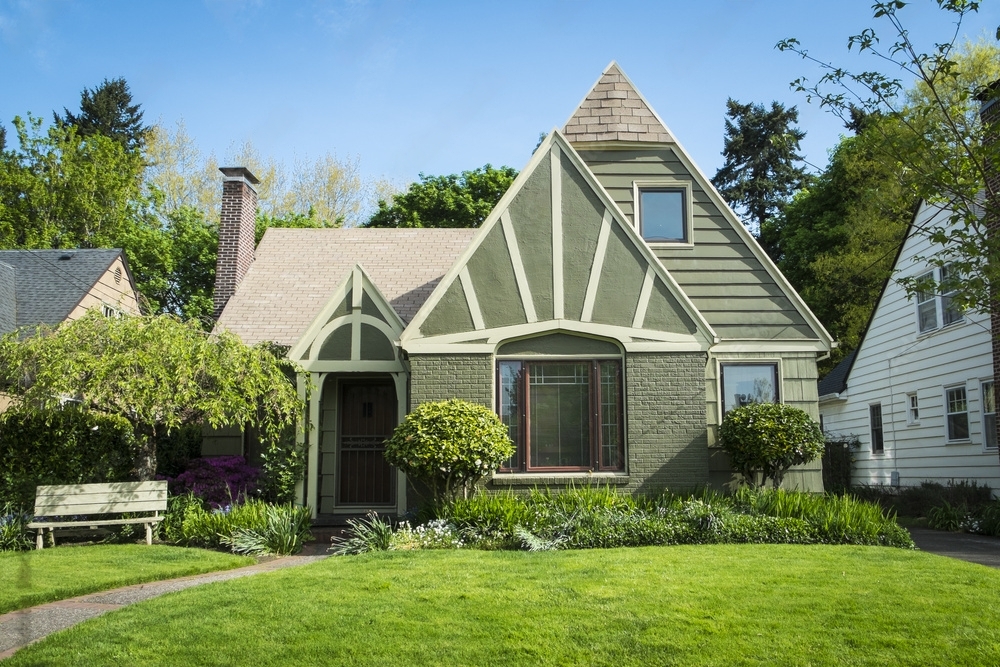Our connection to trees runs deep, both for the beauty they provide and the myriad benefits they offer. Planting native Texas trees is one of the best ways to enhance your property, improve the environment, and enjoy a higher quality of life. From increasing property values to providing shade and reducing energy costs, choosing trees native to Texas delivers substantial benefits for homeowners and their communities!
Environmental Benefits of Planting Native Texas Trees
Native Texas trees are essential in supporting our local ecosystem while providing several environmental advantages. Here’s how planting trees native to Texas can make a positive impact:
Air Quality – Native Texas trees help filter pollutants, improving overall air quality and reducing the presence of harmful particles.
Water Quality – These trees have deep root systems that help manage water runoff, prevent soil erosion, and maintain water quality in the surrounding areas.
Climate Change Mitigation – Trees native to Texas naturally sequester carbon, playing a small but meaningful role in combating climate change.
Urban Cooling – Shade trees in Texas help lower temperatures in urban areas, reducing the “urban heat island” effect and making neighborhoods more comfortable.
Biodiversity – Texas native trees and shrubs create habitats for local wildlife, supporting biodiversity and aiding the sustainability of a variety of species.
Economic Benefits
Planting native Texas trees can be a smart financial investment, too! Here’s how:
Increased Property Values
Trees significantly boost property values. According to industry data, homes with mature trees can enjoy a value increase of 7-19%.Texas native trees like the Texas Red Oak, Live Oak, and Cedar Elm are especially beloved for their beauty, shade, and durability. The added curb appeal and aesthetic value from these trees make your property more attractive to potential buyers.
Reduced Energy Costs
Shade trees in Texas, such as the Texas Live Oak and Texas Madrone, can reduce cooling costs by as much as 50% during hot summer months. Their provided shade helps to block sunlight from hitting your home, lowering indoor temperatures naturally and reducing the need for air conditioning.
Less Costly Maintenance
Native Texas trees are well-adapted to local soil and climate conditions, making them easier and less expensive to maintain. Trees that thrive in Texas’s environment require less watering, fertilization, and pest control, translating to long-term savings and beautiful environments.
Lifestyle Benefits
Native Texas trees enhance your quality of life, too. Let’s look at a few specifics:
Adding Beauty and Curb Appeal
The visual impact of a well-landscaped yard with mature native trees is undeniable. Trees like the Texas Redbud and Mexican Plum add color and texture, contributing to a welcoming atmosphere that’s both timeless and inviting.
Improved Mental and Physical Health
Studies show that spending time around trees can reduce stress, improve focus, and even lower blood pressure. It’s science! Native Texas trees also contribute to cleaner air, supporting better physical health for you and your family.
Making the Neighborhood Beautiful
And planting trees native to Texas doesn’t just benefit your property; it also enhances the overall look of your neighborhood. Big or small, they enhance the entire community as well as the natural environment of your property.
Building Community
Community-wide efforts to plant and care for trees can build stronger connections and foster a shared sense of environmental stewardship for homeowners and communities alike; providing a welcoming neighborhood and communal space for all.
Choosing and Planting Native Texas Trees
Selecting the right tree is key to maximizing its benefits. Below is a quick overview of popular Texas native tree species, some of which you’ll find at Treeline by Hillwood.
Shade Trees for Texas
– Texas Red Oak: A versatile, deciduous shade tree with vibrant red fall colors, this low maintenance tree reaches 35 to 50 feet.
– Bur Oak: Known for its large leaves and acorns and a deep root system, the Bur Oak provides extensive shade and yellow fall foliage.
– Live Oak: A classic Texas tree, evergreen and widely appreciated for its longevity, Live Oaks grow up to 80 feet tall and are known for their magnificent canopies.
– Texas (Cedar) Elm: A hardy, deciduous tree that thrives in a range of soil conditions and grows 50 to 70 feet tall.
– Ginkgo: Strong and robust tree offering fan-shaped, golden yellow foliage in autumn; select a male tree to avoid the odorous fruit.
– Chinkapin Oak: Its beautiful rounded canopy of glossy green leaves offers dense shade with minimal maintenance. Reaches up to 70 feet.
Small Ornamental Trees
– American Holly: Adds year-round greenery with bright red berries in winter.
– Texas Redbud: Celebrated for its pink blooms in early spring.
– Yaupon Holly: A drought-tolerant evergreen that offers year-round interest.
– Mexican Plum: A compact tree with fragrant spring blossoms.
– Vitex: Its flowering purple branches are a natural wonder, but can spread rapidly.
– Texas Pistache: Known for its brilliant fall foliage and soft shade.
Tips for Selecting the Right Tree For Your Property
Define the Purpose: Determine whether you need a tree for shade, aesthetics, fruit production, or family activities like tree swings or climbing.
Check HOA Regulations: A new construction home will be landscaped with select trees that adhere to your community’s landscape policies. Before selecting a new tree, refer to your HOA’s policies. Hillwood Communities like Treeline are committed to water wise landscaping and provide a list of recommended native and adapted landscape plants and trees that perform well in our local climate and require minimal irrigation once established.
Consider Allergies: If you or your family members are sensitive to pollen, choose species known for low pollen production.
Proper Planting Techniques and Care
When planting native Texas trees, ensure they have sufficient space to grow. Proper spacing, soil preparation, and watering practices are crucial for healthy growth. Mulching around the base helps retain moisture. Regular pruning will also maintain the tree’s shape and health.
For the best results, consider sourcing trees from nurseries that specialize in Texas native species. They can provide valuable guidance on planting and care tailored to your region.
Frequently Asked Questions about Native Texas Trees
Do trees increase property value?
Yes, healthy trees generally increase property values, particularly those native to your area. Studies have shown that homes with mature trees often sell for significantly more than comparable homes without them. Trees enhance curb appeal, provide shade, improve air quality, and create a more desirable living environment, all of which contribute to higher property values.
How much do trees increase property value?
Property value increases from trees vary significantly based on factors like tree size, species, location, and overall property condition. Generally, studies show property values can increase anywhere from 3% to 15% due to mature trees. However, in some cases, the impact can be even more substantial, with increases of up to 20% or more for properties with exceptional tree canopies.
Do fruit trees increase property value?
Fruit trees can potentially increase property value, but the value of native Texas fruit trees is more subjective than with traditional trees. While they provide a potential food source and some offer aesthetic appeal, the impact on property value largely depends on buyer preferences. Some buyers will find fruit trees highly desirable, while others may not. Overall, well-maintained fruit trees can enhance curb appeal and potentially contribute to a higher sale price.
How does cutting down trees affect property value?
Trees offer numerous benefits like shade, curb appeal, and improved air quality. Removing them can negatively impact these factors. However, there are exceptions. Removing a diseased, dying, or dangerously leaning tree can actually increase property value by eliminating potential risks. If trees are overly dense, blocking sunlight and causing damage to the property, removal might be beneficial.
Which trees are worth the most money?
Many factors affect the value of a tree including size, condition and the variety’s intrinsic properties such as structure (of its trunk, branches, leaves, blossoms, and fruits), growth rate, strength, and resistance to disease and pests. Some of the most highly valued trees in Texas include Live Oaks, Texas Red Oaks, Bur Oaks, Texas Redbuds, Crape Myrtles, and Pecan Trees.
Treeline by Hillwood – Where Native Trees Meet Modern Living
Treeline is a new home community that embraces the natural beauty of native Texas trees. The name itself reflects the land’s rich, forested history. While still in development, Treeline will feature new construction homes by top builders and thoughtfully designed features like a large amenity center with an event hall, pickleball courts, a resort-style pool, a gaming treehouse, a food truck park and picnic area, an adventure park for littles, and an amphitheater lawn. Other phase 1 amenities include a treehouse-inspired library park, a cloudspotting and stargazing park, an observation deck, an orchard park, plus nature trails, playgrounds, and open green spaces.
Treeline by Hillwood’s commitment to preserving native Texas trees enhances both the beauty and value of the community. Opening in early 2025, Treeline will feature a wide range of homes that blend seamlessly with the natural environment. Be among the first to learn about new developments by watching this virtual video on the community and by joining our interest list today!

